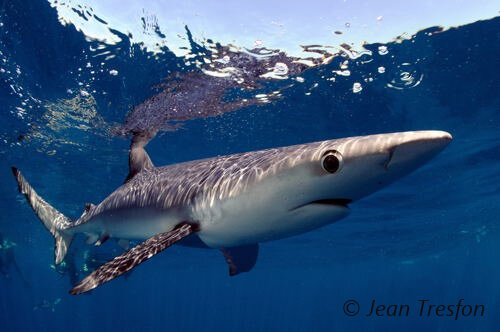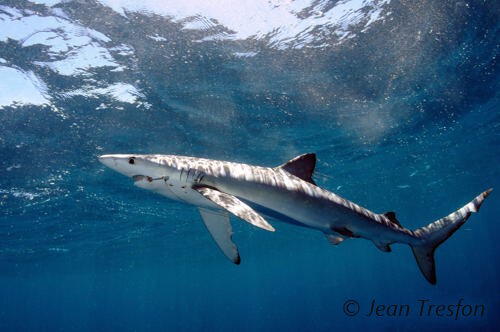Sealife guideThe blue sharkPrionace glauca
Last updated on 08/29/2024 at 12:21 AM
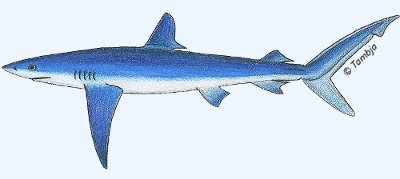
The blue shark (Prionace glauca)
Taxonomy
- Common name: Blue shark
- French name: Requin bleu, peau bleue
- Scientific name: Prionace glauca (Linnaeus, 1758)
- Family name: Carcharhinidae
- Order name: Carcharhiniformes
- Class name: Elasmobranchii
Description
The blue shark is a pelagic shark with a maximum size of about 12.5 feet in length and a weight of around 440 pounds.
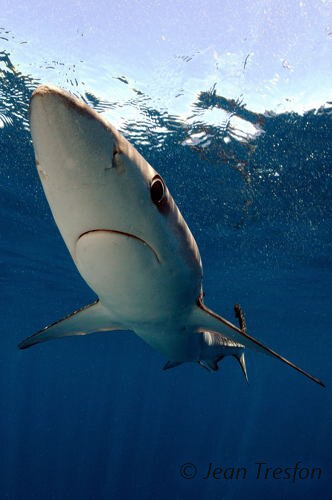
The blue shark has a long pointed nose !
The blue shark is characterized by its bluish coloration on the top side of its very slender body. It also has a long, pointed nose and long pectoral fins.
Geographic range
The blue shark is widely distributed in temperate and tropical waters across the world’s seas and oceans. It is likely the most widespread shark in the oceans, found almost everywhere except the cold waters of the polar oceans.
Blue shark migration is seasonal and depends on the distribution and abundance of their prey.
Habitat
Blue sharks can be found from the surface down to depths of over 1,150 feet. Since they prefer water temperatures around 54 to 68°F, their depth range varies accordingly. In tropical waters, where temperatures are higher, blue sharks are typically found at greater depths !
The blue shark is a pelagic and oceanic species that generally lives a solitary life offshore.
Diet
As a major predator, the blue shark plays a key role in maintaining the balance of the marine ecosystem. It primarily feeds on small pelagic fish, squids, pelagic crustaceans, and occasionally on seabirds or marine mammal carcasses. While it can feed during the day, it is more active in searching for food at night.
Reproduction
The blue shark is viviparous. After a gestation period of 9 to 12 months, the female gives birth to an average of 30 pups, and occasionally more than 100 in exceptional cases, each measuring 14 to 20 inches in length. Young blue sharks reach sexual maturity at around 4 to 6 years of age with lengths ranging from 5.9 to 7.2 feet !
The growth rate of the blue shark is among the fastest of any shark species.
Did you know ?
The blue shark is listed as many other marine species within The IUCN Red List of threatened species. The blue shark appears in the IUCN Red List since 2019 within the category Near Threatened !
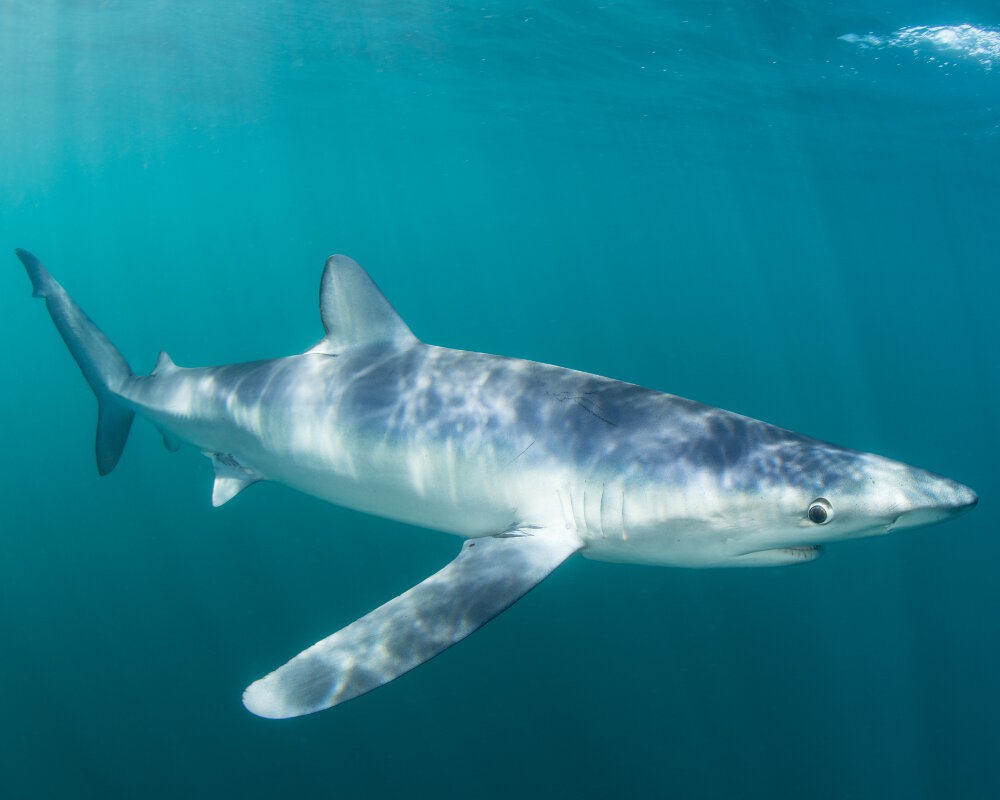
The blue shark (Prionace glauca) © Ethan Daniels | Dreamstime.com
Within the same family

Blacktip reef shark
(Carcharhinus melanopterus)
(Carcharhinus melanopterus)
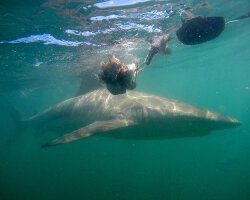
Copper shark
(Carcharhinus brachyurus)
(Carcharhinus brachyurus)
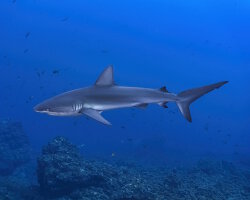
Galapagos shark
(Carcharhinus galapagensis)
(Carcharhinus galapagensis)

Grey reef shark
(Carcharhinus amblyrhynchos)
(Carcharhinus amblyrhynchos)
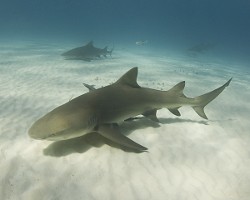
Lemon shark
(Negaprion brevirostris)
(Negaprion brevirostris)

Oceanic whitetip shark
(Carcharhinus longimanus)
(Carcharhinus longimanus)
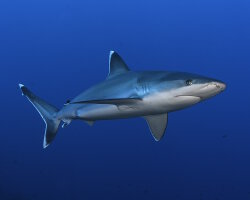
Silvertip shark
(Carcharhinus albimarginatus)
(Carcharhinus albimarginatus)
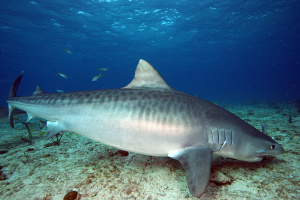
Tiger shark
(Galeocerdo cuvier)
(Galeocerdo cuvier)
Discover also
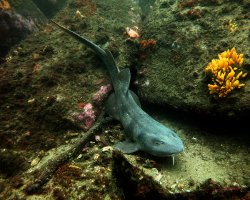
Blind shark
(Brachaelurus waddi)
(Brachaelurus waddi)

Dark shyshark
(Haploblepharus pictus)
(Haploblepharus pictus)
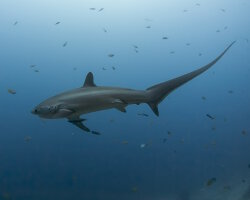
Pelagic thresher shark
(Alopias pelagicus)
(Alopias pelagicus)

Port Jackson shark
(Heterodontus portusjacksoni)
(Heterodontus portusjacksoni)
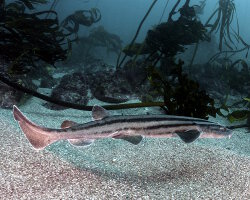
Pyjama shark
(Poroderma africanum)
(Poroderma africanum)
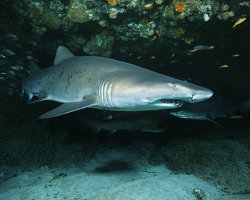
Sand tiger shark
(Carcharias taurus)
(Carcharias taurus)
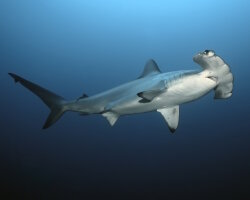
Scalloped hammerhead
(Sphyrna lewini)
(Sphyrna lewini)
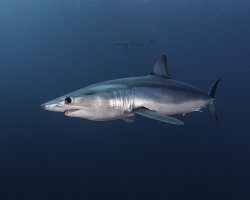
Short fin mako
(Isurus oxyrinchus)
(Isurus oxyrinchus)
Our latestUpdates

Friday, December 19th 2025
The magic of Christmas decorations
Discover Christmas decorations in Florida: giant trees, illuminated palm trees, magical light displays and tropical settings to experience the holiday magic under the sun.
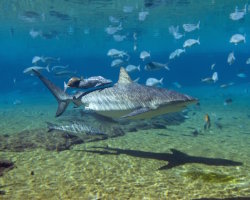
Monday, December 15th 2025
The dusky shark
Discover the dusky shark, one of the world's largest coastal sharks, and learn why this powerful predator is essential to marine ecosystems.

Friday, December 12th 2025
Christmas magic at Disney hotels
Experience the magic of Christmas at Disney hotels: enchanting decorations, giant Christmas trees, dazzling lights and a festive holiday atmosphere.
Photo of the Day

Tortue de mer imbriquée
(Eretmochelys imbricata)
(Eretmochelys imbricata)

